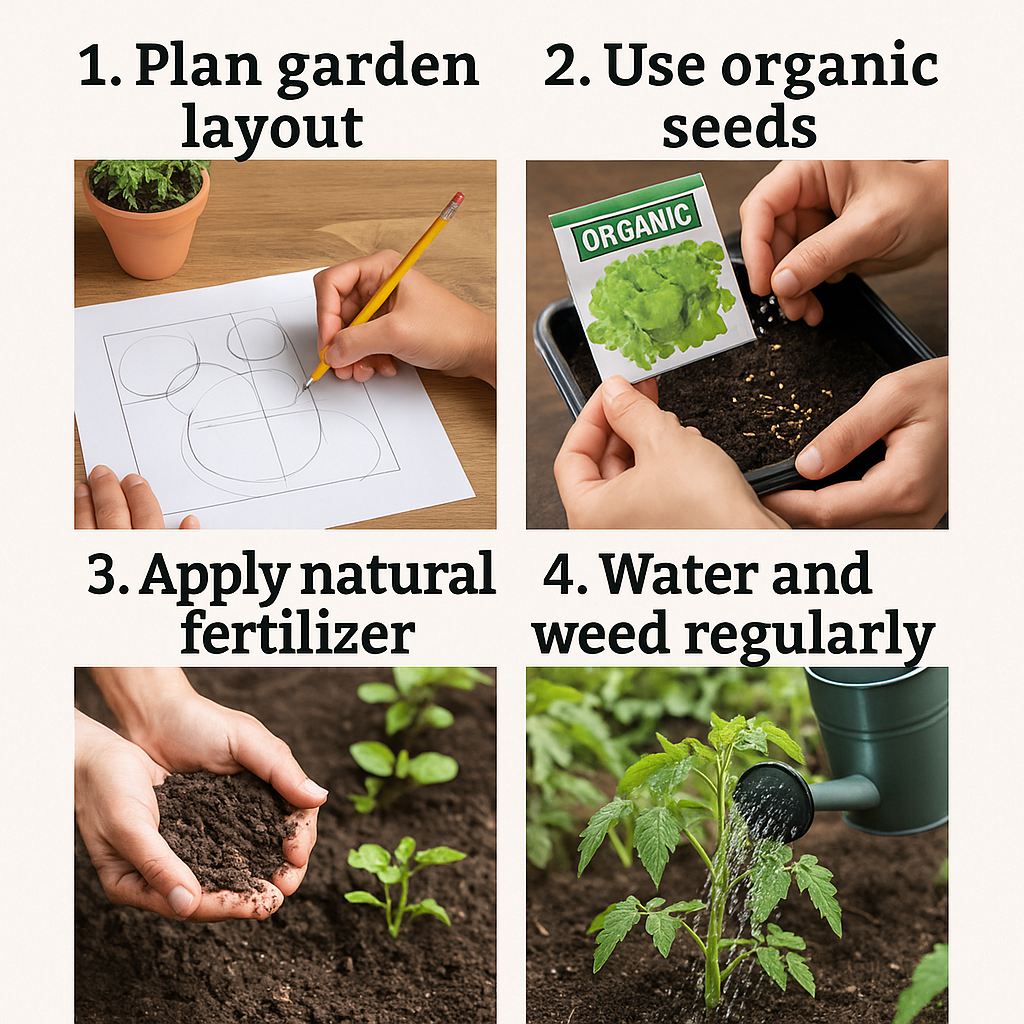SStarting your own organic garden at home is easier than you think. In this guide on organic gardening at home: step-by-step for beginners, you’ll learn how to grow healthy, chemical-free plants using sustainable methods that are simple, affordable, and perfect for any space—backyard, patio, or even a balcony.
Why Choose Organic Gardening?
Organic gardening eliminates the use of synthetic fertilizers, pesticides, and GMOs. Instead, it focuses on building healthy soil, supporting biodiversity, and producing food that’s better for both you and the environment.
Benefits of organic gardening:
Safer for kids, pets, and pollinators
Improves soil health naturally
Produces nutritious, chemical-free crops
Encourages long-term sustainability
Step 1: Choose the Right Location
Pick a spot with:
At least 6 hours of sunlight daily
Access to water
Good airflow and drainage
If space is limited, consider raised beds, grow bags, or containers.
Step 2: Build Healthy Organic Soil
Good soil is the foundation of a thriving organic garden.
Use organic potting mix or build your own with compost, peat moss, and perlite.
Add well-rotted compost or manure to enrich the soil.
Avoid chemical fertilizers—opt for natural options like bone meal or worm castings.
Step 3: Choose Organic Seeds and Plants
Look for certified organic seeds and seedlings from trusted sources. Select beginner-friendly crops like:
Lettuce, spinach, and kale
Tomatoes, peppers, and cucumbers
Herbs like basil, parsley, and cilantro
Step 4: Use Natural Fertilizers
Feed your plants with:
Compost tea
Fish emulsion
Seaweed extract
Worm castings
Apply every 2–4 weeks depending on plant needs.
Step 5: Practice Organic Pest Control
Instead of chemical pesticides, use:
Neem oil
Insecticidal soap
Diatomaceous earth
Companion planting (e.g., marigolds to deter aphids)
Encourage beneficial insects like ladybugs and lacewings.
Step 6: Water Efficiently
Water deeply and less frequently to encourage strong roots
Use mulch to retain moisture and reduce weeds
Water in the early morning to reduce evaporation
Step 7: Maintain and Observe
Weed regularly using hand tools
Rotate crops each season to prevent soil nutrient depletion
Journal your progress to track what works best
Step 8: Harvest and Enjoy
Pick your crops at peak ripeness. The more you harvest, the more some plants will produce. Use your produce fresh, or preserve it by drying, freezing, or fermenting.

New to gardening? Don’t miss our checklist of Essential Tools Every Beginner Gardener Needs.
Final Thoughts
This organic gardening at home: step-by-step for beginners guide gives you everything you need to get started growing your own healthy, chemical-free food. With a little time and effort, you’ll enjoy the satisfaction of nurturing life and harvesting your own produce—naturally.
You can buy certified organic seeds and natural fertilizers here on Amazon.
